#Storytelling Tips
Explore tagged Tumblr posts
Text
🧩 How to Outline Without Feeling Like You’re Dying
(a non-suffering writer’s guide to structure, sanity, and staying mildly hydrated)
Hey besties. Let’s talk outlines. Specifically: how to do them without crawling into the floorboards and screaming like a Victorian ghost.
If just hearing the word “outline” sends your brain into chaos-mode, welcome. You’re not broken, you’re just a writer whose process has been hijacked by Very Serious Advice™ that doesn’t fit you. You don’t need to build a military-grade beat sheet. You don’t need a sixteen-tab spreadsheet. You don’t need to suffer to be legitimate. You just need a structure that feels like it’s helping you, not haunting you.
So. Here’s how to outline your book without losing your soul (or all your serotonin).
—
🍓 1. Stop thinking of it as “outlining.” That word is cursed. Try “story sketch.” “Narrative roadmap.” “Planning soup.” Whatever gets your brain to chill out. The goal here is to understand your story, not architect it to death.
Outlining isn’t predicting everything. It’s just building a scaffold so your plot doesn't fall over mid-draft.
—
🧠 2. Find your plot skeleton. There are lots of plot structures floating around: 3-Act. Save the Cat. Hero’s Journey. Take what helps, ignore the rest.
If all else fails, try this dirt-simple one I use when my brain is mush:
Act I: What’s the problem?
Act II: Why can’t we fix it?
Act III: What finally makes us change?
Ending: What does that change cost?
You don’t need to fill in every detail. You just need to know what’s driving your character, what’s blocking them, and what choices will change them.
—
🛒 3. Make a “scene bucket list.” Before you start plotting in order, write down a list of scenes you know you want: key vibes, emotional beats, dramatic reveals, whatever.
These are your anchors. Even if you don’t know where they go yet, they’re proof your story already exists, it just needs connecting tissue.
Bonus: when you inevitably get stuck later, one of these might be the scene that pulls you back in.
—
🧩 4. Start with 5 key scenes. That’s it. Here’s a minimalist approach that won’t kill your momentum:
Opening (what sucks about their world?)
Catalyst (what throws them off course?)
Midpoint (what makes them confront themselves?)
Climax (what breaks or remakes them?)
Ending (what’s changed?)
Plot the spaces between those after you’ve nailed these. Think of it like nailing down corners of a poster before smoothing the rest.
You’re not “doing it wrong” if you start messy. A messy start is a start.
—
🔧 5. Use the outline to ask questions, not just answer them. Every section of your outline should provoke a question that the scene must answer.
Instead of: — “Chapter 5: Sarah finds a journal.”
Try: — “Chapter 5: What truth does Sarah find that complicates her next move?”
This makes your story active, not just a list of stuff that happens. Outlines aren’t just there to record, they’re tools for curiosity.
—
🪤 6. Beware of the Perfectionist Trap™. You will not get the entire plot perfect before you write. Don’t stall your momentum waiting for a divine lightning bolt of Clarity. You get clarity by writing.
Think of your outline as a map drawn in pencil, not ink. It’s allowed to evolve. It should evolve.
You’re not building a museum exhibit. You’re making a prototype.
—
🧼 7. Clean up after you start drafting. Here’s the secret: the first draft will teach you what the story’s actually about. You can go back and revise the outline to fit that. It’s not wasted work, it’s evolving scaffolding.
You don’t have to build the house before you live in it. You can live in the mess while you figure out where the kitchen goes.
—
🛟 8. If you’re a discovery writer, hybrid it. A lot of “pantsers” aren’t anti-outline, they’re just anti-stiff-outline. That’s fair.
Try using “signposts,” not full scenes:
Here’s a secret someone’s hiding.
Here’s the emotional breakdown scene.
Here’s a betrayal. Maybe not sure by who yet.
Let the plot breathe. Let the characters argue with your outline. That tension is where the fun happens.
—
🪴 TL;DR but emotionally: You don’t need a flawless outline to write a good book. You just need a loose net of ideas, a couple of emotional anchors, and the willingness to pivot when your story teaches you something new.
Outlines should support you, not suffocate you.
Let yourself try. Let it be imperfect. That’s where the good stuff lives.
Go forth and outline like a gently chaotic legend 🧃
— written with snacks in hand by Rin T. @ thewriteadviceforwriters 🍓🧠✍️
Sometimes the problem isn’t your plot. It’s your first 5 pages. Fix it here → 🖤 Free eBook: 5 Opening Pages Mistakes to Stop Making:
#writing#writing advice#writeblr#writers on tumblr#writing tips#writing help#how to write#story structure#writing process#plotting tips#writing guide#writing blog#writing community#writing support#tumblr writing community#writing inspiration#storytelling tips#how to outline#writing resources#novel writing#outline tips#plotting a novel#writing craft#novel planning#write a book#drafting a novel#writing motivation#first draft advice#fiction writing#character arcs
2K notes
·
View notes
Text
The Words We Don’t Say: Dialogue Should Reveal, Not Just Inform.
Every line of dialogue is a tiny window into who your characters are, not just what they need to say. In real life, people rarely say exactly what they mean. They dodge, hint, exaggerate, fall silent, or say one thing when they feel another. Your characters should, too.
Good dialogue isn’t about giving information cleanly — it’s about revealing layers.
For example:
A character could say “I’m fine,” while tightening her grip on the table so hard her knuckles go white.
He could say “You’re impossible,” but his voice is soft, almost laughing — meaning you’re impossible and I love you for it.
She could say “I hate you,” in the rain, soaked through, desperate — meaning don’t leave.
The surface words and the real emotions don’t always match. That’s where the tension lives.
That’s what makes dialogue linger.
Three quick tricks to deepen your dialogue:
1. Layer emotion under the words.
Surface: What are they saying?
Subtext: What do they really mean?
Conflict: What’s holding them back from just saying it?
E.g. Two best friends sitting in a car after one of them has announced she’s moving across the country.
She fiddled with the edge of her sleeve, staring straight ahead.
“You’ll forget about me after a week,” she said, light, almost laughing.
Surface: She says he’ll forget about her.
You’ll forget about me after a week. (The outward words are casual, a joke.)
Subtext: She’s terrified of being left behind, feeling abandoned.
I’m scared you don’t care enough. I don’t want to be alone. Please tell me you’ll miss me.
Conflict: She doesn’t want to beg him to stay — she’s too proud, too afraid he doesn’t feel the same.
She wants to stay close, to ask for reassurance — but fear of rejection makes her hide her true feelings under humor.
2. Use silence and body language.
• A pause can scream louder than a speech.
• A glance away can whisper I’m afraid better than a thousand words.
E.g. After her apology, it’s his silence — heavy, raw, unspoken — that says everything words can’t.
After an argument, she finally admits, in a shaking voice, “I didn’t mean to hurt you.”
He says nothing.
Instead, he leans back against the wall, scrubbing a hand across his mouth, looking everywhere but at her.
The silence stretches between them — heavy, aching, almost unbearable.
When he finally does speak, his voice is hoarse: “I know.”
Breakdown:
Pause: His silence after her admission isn’t empty — it’s full. It screams his hurt, his struggle to forgive, his overwhelming emotions.
Body Language: Scrubbing his hand across his mouth, looking away — it all whispers I’m overwhelmed. I’m hurt. I don’t know how to say what I’m feeling.
Result: The tension between them becomes almost physical without a single extra word.
3. Let characters miscommunicate.
• Real conversations are messy.
• People interrupt, misunderstand, react to what they think they heard.
• That tension is pure narrative gold.
E.g. A confession turns into heartbreak when he misunderstands her words and walks away before she can explain.
She pulls him aside at the crowded party, her voice low and urgent.
“I need to tell you something — about us,” she says.
He stiffens immediately, crossing his arms. “Don’t bother. I get it. You regret everything.”
She blinks, hurt flashing across her face.
“No, that’s not what I meant—”
But he’s already turning away, anger burning in his chest.
She watches him go, the words she was really about to say — I love you — still caught in her throat.
Breakdown:
Miscommunication: He interrupts and jumps to conclusions, assuming the worst.
Realism: Conversations are messy; people hear what they’re most afraid of hearing.
Narrative Gold: Now, there’s heartbreak, regret, and a perfect setup for future emotional payoff when they finally untangle the truth.
Some brilliant examples to study:
‘Normal People’ by Sally Rooney — where miscommunication becomes the air between them.
‘Pride and Prejudice’ by Jane Austen — where formality and wit mask tenderness and fear.
‘Six of Crows’ by Leigh Bardugo — where silence says what pride refuses to.
Dialogue is not just a tool for moving the plot.
It’s a doorway into the heart of your story.
Open it carefully.
#writing tips#writeblr#dialogue writing#character development#writing advice#writers of tumblr#show don't tell#creative writing#write your heart out#writing community#amwriting#writing craft#dialogue is key#storytelling tips#write realistic dialogue#writing inspiration#writer thoughts#writers life#writing skills#character voice#dialogue matters#writing process#write better#storycraft#fiction writing#writing prompts#writerly wisdom#layered writing#vivsinkpot
333 notes
·
View notes
Text
I have to stress: it is good to be in distress when there is someone to save you. It is a good thing, to be that character. It means someone noticed when you went missing or when something went wrong for you, and they stepped outside the sphere of their lives and intervened on your behalf, in yours. They didn't have to. They could've left you. But you were worth it to them. (You might have already been worth it, but what's wrong with someone proving that statement? What's worth if it's only for the self to enjoy?) Worth great risk, worth great pains, and they made a statement about your worth that they wouldn't have had an opportunity to make if not for the distress you were in.
It's like if Ariel saved the day in The Little Mermaid. All that would prove is that she can get herself into reckless trouble and then scrape herself right back out again. Big friggin whoop. But if Eric saves her? Oh.
Well, then, there's something worthwhile about her, to him, despite the fact that it would be fair if he just thought of her as "a mermaid, a thing, a creature." Well, then, she's right about humans being capable of caring for something other than themselves. Well, then, she's loved by someone.
Look at all these much-better statements we can make when the damsel is in distress instead of saving herself?
There's nothing weak about being in distress. You're not a goddess. You can't control everything. You're not even right all the time. Sometimes bad stuff happens and you actually can't control the outcome.
And what a delight, when that eventuality, that certainty that something bad is going to happen, is answered by a much greater truth that didn't have to be certain: you are loved.
Distress says: "Calamity befalls you, you aren't all-powerful, you can't control all the variables, and you are alone in me." And the Hero answers, "I love her." And that always wins.
#Damsel in distress#damsel#distress#you cannot handle this#and in just about ALL ways that humility is better than self-sufficient strength#you're inconvenient; but not to Love#you're dangerous; but not to Love#you're trouble; but not to Love#and if it weren't for Distress then Love wouldn't get to shine#love#storytelling#storytelling tips#Writing#tropes#feminism#fiction#women empowerment#women in fiction#the little mermaid
122 notes
·
View notes
Text
Not-a-tutorial - Lighting (Basics)
I really loved @nocturnalazure Storytelling tips, and figured I'd add one more chapter that I, personally, feel can be helpful to add the mood or maybe a bit more 🌶 to your pictures! (with or without reshade ;))
But first, go check out these tips by Nocturnalazure!
Camera Shots
Dialogues Part I
Dialogues Part II
Things to note before beginning:
This technique can be used with and without reshade/gshade/sweetfx or even editing images. (but I would recommend it!)
Make sure you're playing with at least "Lighting and Shadows" to highest settings. Otherwise this won't work.
All of the images in this post have been taken without being edited/haven't used reshade/gshade for them. (So, just the good ol' C button 😉)
A lighting mod can already go a long way! So, if you haven't yet, go find one before reading!
All Base Game compatible! No EPs/SPs needed
I'm in no way a colourist! But it may be cool to check the science behind it if you want to go more advanced on this :)
And with that said... let's get to it!
What do we need?
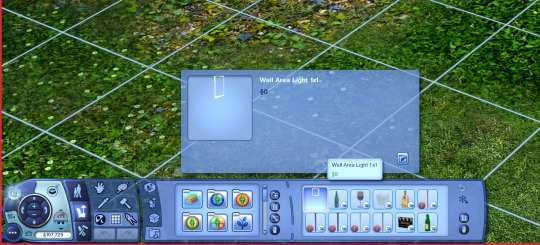
1. "Wall Area Light 1x1", (since it's simpler for sims)
You can find it under BuyDebug on (But first make sure you have Testingcheatsenabled true on!).
Pssst! I would recommend adding it to a catalogue! I made a "story" catalogue and added it so it's much easier to find it!
How to use lighting, the very basics:
Here we have Lolita Goth, outside with no lighting except for the world's.

Not to bad, eh? Well. there are a few reasons why we want to add lights to this scene.
Lolita's face is quite dark.
The reader will be very focused on the background AND the sim. (I personally keep looking at the bench, and less at Lolita right now.)
It's interesting, partially because of the lighting mod installed, but we can make it even more appealing.
NOTE: These techniques will work no matter if your sim is facing the sun or facing away from the sun! The results will always be the same with the lights.

Setup:
The basic setup is simple! You'll need 3 lights. One behind your sim(s), one sideways and one in front.
Back light = used for darker colours (blue, red, green, purple, orange)
Sub light = Used as helper colour for Back light. Can remove if not necessary. (helper in the sense of: Backlight is blue, adding purple can help being more interesting).
Front light = always white, flame, orange.

An example with the 3 lights used.
Setup:
Backlight = Red
Sub-light = Orange
Front Light = White
Why can't I just use the front light?
While it's not a bad approach in certain scenes, often the result is a bit too... tense:


(Left is with backlighting, right is with only front-light).
Personally I find the left image much more appealing, and more interesting to look at. But if trhe right picture is more your cup of tea, the feel free to use it!
Here's an example with the same principle but at night:


(Left is with backlighting, right is with only front-light).
Here, I think it shows it even more, how nice backlights can make something more captivating!
Now that we know about the basics of setting up our scenes... Let's get into the details a bit more!
How to use lighting for nighttime (Outdoors):
Here we got a scene with Lolita and Gunther Goth in a dark spooky graveyard, having a gothic-y picnick. In-game, this is the lighting setup as of right now:

It's lit up enough, right? While in regular gameplay this is definetly true, in a story setup we can actually make this much more interesting! But before that, here's our scene image:

The thing though is... while there is light, currently the eyes aren't drawn to Lolita's face at all:
So... how do we fix this?
There are a few ways. But all require our Wall Area Light!
Setup 1:

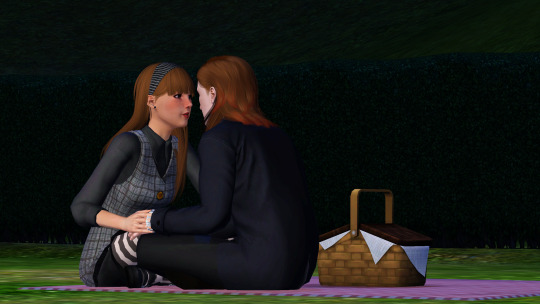
One light can go a long way! In this instance, I added only one light, and used "Dimmed" so it still shows as if they're in the dark. (To select different light settings, use Shift + Click to see them ;))
There are scenes where this would be enough (though, having 2 facing from different directions would work better), it dosn't really in this instance.
The problem, however, is that it almost feels like there's a spotlight that is facing them. The scene may have got a bit more interesting (as we are more focused on Lolita's face), but just isn't there yet.
Setup 2:



By adding in a blue colour, facing the back and a little bit the front of our subject(s) we get a much more "fake" nightlight representation.
Though, a few thoughts here:
While in this scene I personally liked making the back colours blue, we can always experiment a little and change one of the blue into purple!
Now, the part of Lolita's face that isn't blue, we do want a non-blue colour. For this, I like to cycle through the following colours:
White
Flame
Orange
(Rarely! But sometimes red).
See result here:




This all depends on your preference, and if you want a deeper colour. Or maybe, to even set a certain dramatic effect! (this is where red may be nicer).
Make sure to also play around with the intensity settings of each light! This can really change things up!
Currently, I've set up the intensities like so:
Blue 1 = Bright
Blue 2 = Bright
Orange/white/flame/red = Dim
Though, if Blue 2 is purple for you, I'd recommend setting this one to normal or even dim.
How to use lighting for Daylight (Outdoors):
This one is much easier, and more straightforward! While backlighting is important here as well, it's less of a necessity in this setting.
Okay! So you've posed all the characters, set up objects, etc... and now we're ready for the lighting! Here's what I currently have:
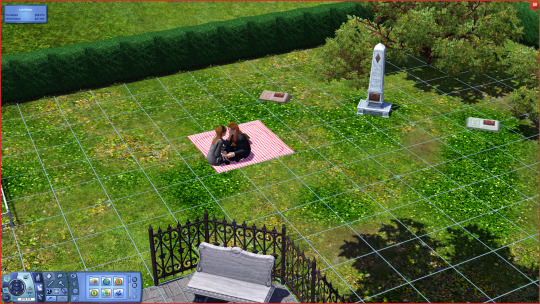

Not bad, not bad at all without any lights... but what if we add them!


Here I added a White-dimmed light.
Better! In fact, if this is the kind of lighting you want in your scene, then feel free to leave it here!
What about a little more complicated lighting... sort of what we did with our night scene?
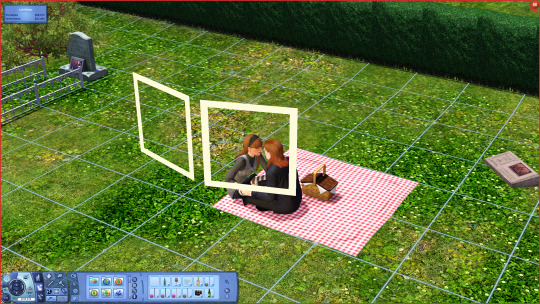

Here the left light is a white-dimmed light, and on the right we got a orange dimmed light.
it's not much, but it definitely added a nice shade to the scene! :)
Let's get to how we do this same thing, but indoors!
#the sims 3#ts3#sims 3#the sims#sims#sims 3 story#sims 3 storytelling tips#storytelling tips#ts3 screenshots#ts3 simblr#ts3 gameplay#thesims3#sims 3 blog#sims 3 gameplay#sims 3 screenshots#sims 3 simblr#sims3
248 notes
·
View notes
Text
Tip for gameplay-driven storytellers
I started doing something recently I think others will want to know about and start doing in their own saves and stories, especially if you're someone who struggles with what to do in your gameplay sessions. Whenever my sims are invited to a rabbit hole event, when they return home, I make the event real and play it out if possible. I invite the relevant sim(s) to a venue similar to where the invite said they were going and let the sims run wild. Free content! You can either use the event in your story or use it to learn more about your characters and stow the information away for later. This is especially helpful for teenagers since it seems all those invites are rabbit holes. Give it a try and see how it adds life to your stories.
59 notes
·
View notes
Note
How would you say David Kaye's Optimus Prime on Transformers Animated holds? Do you think he does better than the other modern Optimus voices given at least he isn't trying to essentially be like Peter Cullen and being allowed to make the role his own?
Personally, I view David Kaye's take on Optimus to be the best Optimus incarnation to date.
He's more like the young, hip dad-bot of G1 — though TFA Optimus is even younger still, to the show's and the character's benefit.
Other Autobots being more open to question TFA Optimus (including Optimus himself) and not regard him as an infallible Chosen One makes him far more interesting than any incarnations where he is written and treated by the writers and narrative to be The Best (TM).
And David Kaye's vocal performance seals the deal with the magnificent writing behind TFA Optimus' character.
#David Kaye#TFA#Transformers Animated#Transformers#Animated#Transformers: Animated#TF:A#Optimus Prime#Voice Acting#Acting#Actor#Actors#Voice Actor#Voice Actors#Performance#Vocal Performance#Character Writing#Story Writing#Writing#Writing Tips#Storytelling#Storytelling Tips#Story Writing Tips#Character Writing Tips#Tips
24 notes
·
View notes
Note
Hello hello hello! I have a question. You've posted the first half of The Art of Being Seen in a quick succession, and I've noticed that these are /long/ scenes that you're working with with A+ editing. I was wondering, were many of these scenes already completed before you posted them onto tumblr? 🤔If so, how did you manage to hold back from previewing them? I feel my biggest problem as a story teller is that I rush to get the content out due to my excitement.
Hey hey hey ✨ I have to lock myself into a cage and toss the key across the room 😭😭😭
No seriously, the short answer is yes! I’ll have the next two to three parts already completed by the time I post the first. At least for this story.
I think I’ve done a good job since I started storytelling with not spoiling my own story or rushing through it (even though I really really want to all the time) bc I know the pay off will be better appreciated in the long run. I also want to quickly get content out which is why I work on my stories all the time.
The best way for me to work on my story is that I never really shoot scenes in order. I always take care of the big ones first or the main focus of the update first and I’ll fill in the smaller parts later on. I’m also always a day or two head of when I post vs working on them in real time. So let’s say I’ll post part one on Monday morning , Monday night im already working on part three or four because I started working on part one last Thursday and part two last Sunday. That makes sense? 😭
I also do very little editing which allows me to post quickly! It’s mostly gshade pulling the heavy lifting. I use alot of in game objects to help with scenes that maybe someone would edit in photoshop. Here’s a sneak peek of such a scene where I used these lights bc I don’t have the skills atm to create in PS.

I also owe my heart and soul to builders who create breathtaking lots, because if I had to make even a third of the builds I used I’d post once a year. I’m an awful builder, so downloading the lots I need cuts time between post down soooo much.
TL DR: a firm talk with myself to behave and be patient and have a fairly decent posting schedule that’s ahead of when I actually release them into the wild. 😭🥹
#the art of being seen tag#ask#storytelling tips#right now I’ve already finished the first update of the next installment in the series#now as I write this I’m working on the second episode#I’ll keep at it until I have almost all ready to go#then by next week I’ll have my scenes completed so I can post each day
39 notes
·
View notes
Text
Writing Across Genres: Blending Styles and Themes
When writers dare to venture into multiple genres within a single story, they open doors to creative freedom, unique storytelling experiences, and new ways to captivate readers. Writing across genres isn’t just about combining elements from two distinct categories, like romance and mystery, or science fiction and horror. It’s about weaving together themes, moods, and stylistic choices to form a…

View On WordPress
#Character Development#combining genres#creative writing tips#fantasy and sci-fi#genre blending#genre tropes#horror comedy#mixed genre writing#multi-genre stories#mystery and romance#Narrative Structure#novel writing#pacing in stories#Plot Structure#reader expectations#storytelling tips#Unique Storytelling#World-Building#writing a series#writing across genres#Writing Advice#Writing Inspiration#Writing Techniques#writing tone
4 notes
·
View notes
Text
Creating Tension and Suspense in Your Writing: Keeping Readers Hooked
Tension and suspense are crucial elements in storytelling that captivate readers, keep them engaged, and make them eagerly turn the pages. Whether you’re writing a thriller, mystery, or even a romance, effectively building tension and suspense can elevate your narrative and leave a lasting impact on your readers. In this article, we will explore techniques to help you create tension and suspense…

View On WordPress
#atmospheric settings#building suspense#character goals and conflicts#character motivations#cliffhangers#creating engaging narratives#foreshadowing#narrative techniques#pacing in writing#reader engagement#revealing information in writing#storytelling tips#tension in storytelling#unreliable narrators#writing techniques
5 notes
·
View notes
Text
📊 How to Use Tropes Without Turning Your Story into a YA Checklist
You can tell when a book was written by vibes and TVTropes alone.
It’s got: ☑️ the reluctant chosen one ☑️ the love triangle ☑️ the mysterious brooding boy™ ☑️ the sassy best friend ☑️ the dead parents ☑️ the villain with daddy issues ☑️ the scene where someone says “you don’t know what I’m capable of” and walks away dramatically
And like… that’s fine.
Tropes are tools. But here’s the thing: they are starting points, not story goals.
If your plot reads like it was drafted by a checklist in a Pinterest caption, it might be time to recalibrate. Here's how to actually use tropes without turning your book into a YA Mad Libs generator:
─────── ✦ ───────
🧩 Tropes Are Patterns--Not Presets
A trope is a pattern, not a requirement. It’s not a law. It’s not a plug-and-play feature. And it’s definitely not your plot.
The “enemies-to-lovers” arc? That’s a container. What you put inside it, that’s where the originality lives.
The goal isn’t to avoid tropes. It’s to do something interesting with them.
→ Why are they enemies? → What does the “love” cost them? → What happens if they fail to become lovers?
Tropes don’t carry the story. The conflict does.
─────── ✦ ───────
⚔️ Complicate the Familiar
Here’s a trick: if a trope feels too easy, break it in half.
Examples: → “Reluctant chosen one” → okay, but what if they wanted it, and then hated it once they got it? → “The mentor dies” → cool, but what if the mentor fakes their death to manipulate the protagonist? → “Sassy best friend” → no. Make them real. Give them pain. Give them depth. No more walking punchlines.
Tropes are scaffolding, not shortcuts. Add weight. Add doubt. Add betrayal.
─────── ✦ ───────
🕳️ Interrogate Why You’re Using It
Ask yourself: → Do I love this trope or do I feel like I have to include it? → Am I doing this because I’ve seen it done… or because it serves my story? → Is this trope the only interesting thing about this scene?
If your answer is “because that’s what YA stories do,” delete it. Go deeper.
─────── ✦ ───────
💔 Tropes Aren’t Substitutes for Character Arcs
You can’t use “grumpy x sunshine” and call it development. Tropes are flavors, not meals.
Give us: → Choices with consequences. → Conflicting values. → Character growth that costs something.
Otherwise? Your grumpy guy is just a Pinterest moodboard with a pulse.
─────── ✦ ───────
🧨 Use Reader Expectations Against Them
You want to use a trope and not make it predictable? Weaponize it.
Example: → Start with a love triangle. Let the MC fall hard. Then have both love interests realize they’re in love with each other. → Use the “chosen one” trope… but make it about dismantling that myth entirely. → Introduce the “villain redemption arc” and let them choose to stay bad because it makes more sense for them.
Set up the pattern. Then snap it in half. That’s how you surprise a jaded reader.
─────── ✦ ───────
Final thoughts from your local trope goblin:
→ Tropes aren’t the problem. It’s treating them like a checklist instead of a narrative engine. → A good trope doesn’t make your story good. How you twist it does. → If a story reads like it was built from Tumblr quotes and nothing else—it’s gonna flop.
So go ahead. Use the trope. Then ruin it. Make it weird. Make it hurt. Make it yours.
—rin t. // story mechanic. trope thief. YA bingo card burner. // thewriteadviceforwriters
Sometimes the problem isn’t your plot. It’s your first 5 pages. Fix it here → 🖤 Free eBook: 5 Opening Pages Mistakes to Stop Making:
🕯️ download the pack & write something cursed:
#writing#writing advice#writeblr#writers on tumblr#writing tips#writing help#how to write#story structure#writing process#plotting tips#writing guide#writing blog#writing community#writing support#tumblr writing community#writing inspiration#storytelling tips#how to outline#writing resources#novel writing#outline tips#plotting a novel#writing craft#novel planning#write a book#drafting a novel#writing motivation#first draft advice#fiction writing#character arcs
357 notes
·
View notes
Text
Romantic Prompts: The One Who Watches vs. The One Who Shines.
Some romances burn loudly. Others linger in the quiet — in glances, in stillness, in the ache of being unnoticed.
This is for the ones who watch, and the ones who shine too brightly to see they’re being watched.
Here’s ten prompts for the kind of love that’s felt in silence, and seen too late — or just in time. Pronouns are interchangeable.
1. “He never noticed her in the corner. But she noticed everything.”
She stayed just out of reach — not quite part of the scene, not quite outside it. He filled the room like sunlight, and she lingered where the light didn’t reach. But she saw it all: the tremble in his hands, the hesitation before a laugh, the way his shoulders curled inward when no one was looking. She didn’t need to be seen to know him.
2. “He shines so brightly everyone sees him, but no one sees him clearly.”
Everyone adored him — that was the trouble. He was a constellation, dazzling and distant, drawn in gold. But she knew what others missed: how he hated crowds, how his gaze darted to the exit when laughter got too loud. He wore charm like a costume. She saw the person beneath it.
3. “She knows something about him no one else does.”
He always stepped out of the party for five minutes at a time. No one noticed, except her. She watched him light a cigarette with shaking fingers, shoulders drawn tight like string pulled too far. She knew it wasn’t about the smoke. It was about the quiet. She never followed. She just waited until he came back.
4. “What does it feel like to be adored from afar — and then to realize it?”
At first, he thought it was coincidence. Her gaze lingering a moment too long. A laugh at something no one else heard. But then it kept happening. He started to feel it — that gravity. That quiet, unwavering attention. It was terrifying and tender, being seen that clearly by someone who asked for nothing in return.
5. “You look at me like I’m a cathedral.”
She said it like it was an accusation. A deflection. But his voice was steady when he answered: “Because you are.” He saw her in fragments — beauty in broken things, holiness in how she tried to stay soft in a world that demanded armor. Of course he looked at her like that. How else could he?
6. “He finds her alone — and understands something unspoken.”
He found her in the library, hands buried in old books, soft light on her cheek. She didn’t hear him come in. She was too absorbed — not in the page, but in the memory of his voice echoing through the hall earlier. When he called her name, gently, it wasn’t surprise she saw in his eyes. It was understanding.
7. What do they admire in each other that no one else notices?
He admired her stillness — how she moved like water, calm and clear. She admired his chaos — the way he threw himself into the world with both hands, unafraid of being hurt. Everyone else saw what sparkled on the surface. They loved what lived underneath.
8. The watcher always thought her love was invisible.
She thought he’d never notice. How could he, when everyone else vied for his attention with fireworks and noise, and she only ever offered silence? But he did. One night, he caught her staring — and didn’t look away. He smiled, slowly, like he’d known all along.
9. “Do you ever get tired of being seen?” “Do you ever get tired of being invisible?”
He asked it like a joke, but his voice cracked. She didn’t laugh. She looked at him — really looked — and said, “Yes. All the time.” The room felt smaller then, quieter. For the first time, it felt like they were the only two people in the world.
10. The roles reverse — when the watcher becomes the watched.
She watched him this time — across the room, while he talked to someone else, while he smiled like he wasn’t holding anything back. And now she was the one trying not to stare. Not to ask. Not to reach for something she hadn’t realised she missed until he stopped looking back.
Whether you’re writing yearning, hidden devotion, or the slow shift from distance to intimacy — this dynamic leaves its mark.
More dynamic-driven prompt sets coming soon.
#writing prompt#prompt list#writing community#writeblr#writing inspo#writing ideas#romantic writing prompts#character dynamics#storytelling tips#slow burn#romance#pining#mutual pining#unnoticed love#romantic tension#soft love#tropes#underrated dynamics#emotional storytelling#character study#writing craft#fiction writing#writers on tumblr#dialogue prompt#scene ideas#writing aesthetic#motifs#vivromanticprompts 💕
106 notes
·
View notes
Photo

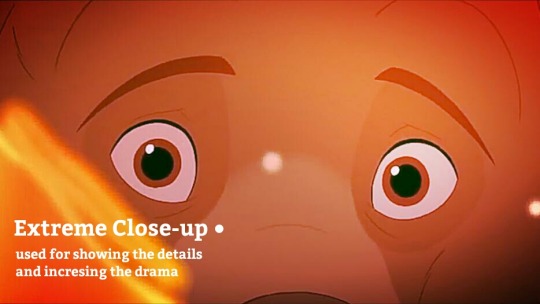
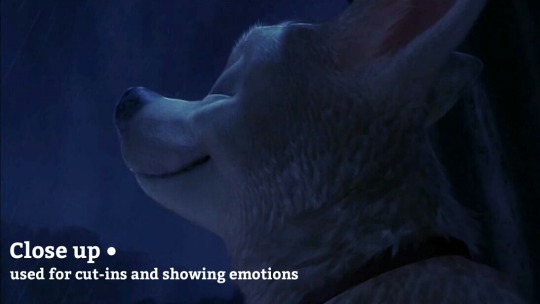

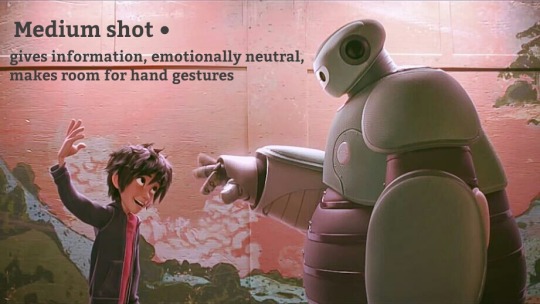
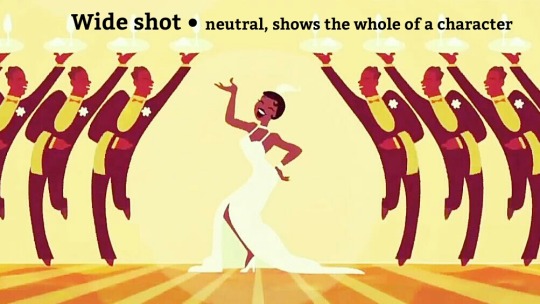

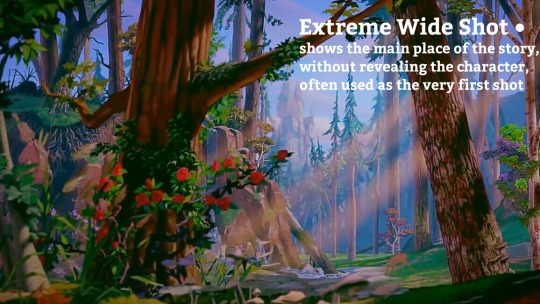
Disney + movie shots
357K notes
·
View notes
Text
Newsflash to writers out there.
Just because your female hero has a temper and can insult and smash any opposition against her DOES NOT make her a true, strong female character.
Just a reminder: Might does not automatically make right.
To close off with a quote from Peter Cullen (in his humble honesty, who is quoting his late older brother Larry, a Vietnam War Veteran), "If you're gonna be a hero. Be a real hero. Don't be a Hollywood Hero type, with all the BS, and all the yelling and screaming and trying to be tough. Be strong enough to be gentle."
(And you know what? This isn't just applicable to female heroes, but also for male heroes as well.)
#strong female#strong female characters#strong females#strong female character#writing#writing tips#good writing#good storytelling#good story writing#story writing#storytelling#storytelling tips#story writing tips#Quote#Quotes#Peter Cullen#Inspirational Quote#Inspirational Quotes#strong male character#strong male characters#strong male#strong males#hero#heroism#heroes#hero character#hero characters#character writing#character writing tips#good character writing
26 notes
·
View notes
Text
"I tell stories that resonate with me and hope that an audience wants to see them. I don’t tell stories that I think an audience wants to see because that’s how you make bad television.” - Shonda Rhimes
-------
I wonder if the second part is about when the showrunner allows executives to take over the process...because the showrunner feels like if they decline the advice from the executives...they will lose their chance to tell their stories.
PS: You can find the quote in an interview Lacey Rose did with Shonda and Betsy Beers via The Hollywood Reporter.
--------
#Quotes#Quotes From Women#Storytelling Tips#Story Hacks#Shonda Rhimes#Grays Anatomy#Betsy Beers#How To Be You
0 notes
Text
I've had to come to terms with the fact that some of the twists in my latest novel will probably be relatively easy to foresee for observant readers, because the alternative is to withhold information to a jarringly artificial degree. Sometimes, the solidity of the story - and the satisfaction of the readers who get to say "I DID guess right!" - have to come before the shock value. And sometimes storytellers need to remember that surprise is not the most important emotion for their story to invoke.
I see posts go by periodically about how modern audiences are impatient or unwilling to trust the creator. And I agree that that's true. What the posts almost never mention, though, is that this didn't happen in a vacuum. Audiences have had their patience and trust beaten out of them by the popular media of the past few decades.
J J Abrams is famous for making stories that raise questions he never figures out how to answer. He's also the guy with some weird story about a present he never opened and how that's better than presents you open--failing to see that there's a difference between choosing not to open a present and being forbidden from opening one.
You've got lengthy media franchises where installments undo character development or satisfying resolutions from previous installments. Worse, there are media franchises with "trilogies" that are weird slap fights between the makers of each installment.
You've got wildly popular TV shows that end so poorly and unsatisfyingly that no one speaks of them again.
On top of that, a lot of the media actively punishes people for engaging thoughtfully with it. Creators panic and change their stories if the audience properly reacts to foreshadowing. Emotional parts of storytelling are trampled by jokes. Shocking the audience has become the go to, rather than providing a solid story.
Of course audiences have gotten cynical and untrusting! Of course they're unwilling to form their own expectations of what's coming! Of course they make the worst assumptions based on what's in front of them! The media they've been consuming has trained them well.
#storytelling#storytelling mistakes#writing mistakes#author mistakes#storytelling tips#writing tips#author tips
59K notes
·
View notes